Broken
Figure out why something isn't working and fix it

Lesson Plan
1. Prepare
- Read through the student material in the LEGO® Education SPIKE™ App.
2. Engage (5 Min.)
- Use the ideas in the Ignite a Discussion section below to engage your students in a discussion related to this lesson.
- Use the video to explain the lesson.
3. Explore (35 Min.)
- Have your students work in pairs to build the CNC machine, have them keep in mind that they're building a non-functioning machine.
- Ask them to write pseudocode or verbally describe what each line of the program does before activating it.
- Have them run the program and observe the CNC machine’s performance.
- Ask your students to analyze the root causes of any gaps between the observed and intended functions.
- Challenge them to come up with solutions to the problems they’ve observed.
- Encourage them to test and iterate their solutions.
- Remind them to document the problems and their solutions.
4. Explain (10 Min.)
- Facilitate a sharing session. Encourage your students to talk about the problems they found and the solutions they came up with.
- Ask them to summarize what they’ve learned about the different structures or mechanisms they’ve examined and adjusted.
5. Elaborate (25 Min.)
- Ask each team to iterate their solutions and test them by modifying their models and/or programs.
- Have them take turns sharing their improvements with the class.
- Don't forget to leave some time for cleanup.
6. Evaluate
- Give feedback on each student's performance.
- You can use the assessment rubrics provided to simplify the process.
Ignite a Discussion
Start a discussion about iteration or fixing things by asking relevant questions, like:
- What's usually your first reaction when something breaks?
- If you're going to fix something, what will you do first?
- What's the last thing you've fixed? How did you find the problem?
- What's a CNC machine? Do you know what it's used for?
Tip:
CNC stands for computer numeric control. CNC machines receive a series of coordinates from a computer and perform a task by moving to those coordinates in the desired order.
Find an online video that shows how a CNC machine works, and use it to help introduce this lesson to your students. Potential keywords: “CNC milling machine” or “CNC milling process.”
Have your students watch the lesson video to see what they're about to do.
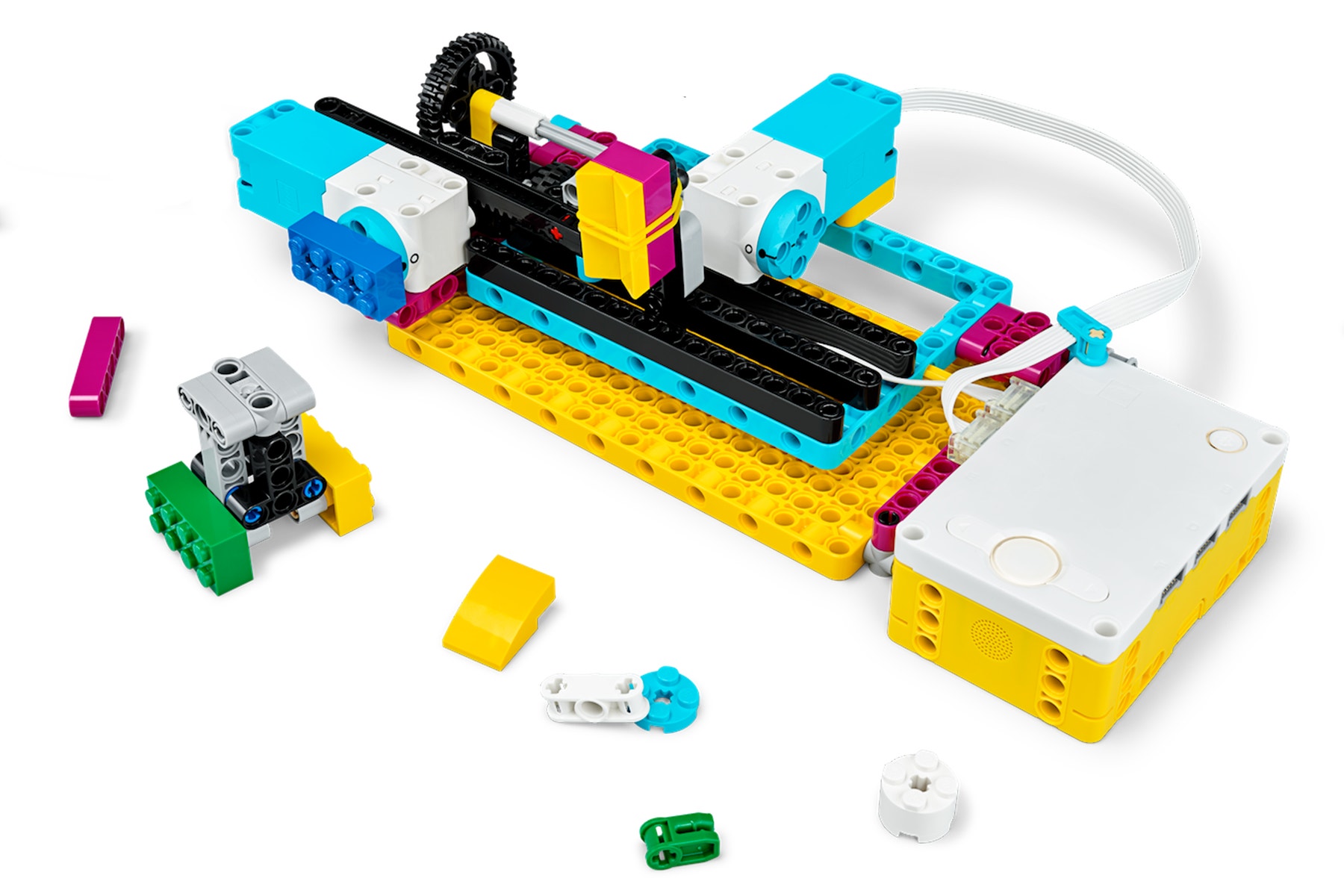
Building Tips
Tandem Build
Split each team's building tasks to ensure that everybody is actively involved:
• Student A: top of the CNC machine
- The top of the CNC Machine has two motors. One directs the pencil to
trace different shapes, and the other controls the gearing to make
sure paper can move through the machine.
• Student B: bottom and needle of the CNC machine
2. The pencil top adds weight to the pencil to ensure contact with the paper and stabilize the pencil as it’s drawing.
3. The needle connects a pencil to the machine so that it can draw shapes on paper.
4. The CNC machine is designed to handle letter-sized paper. The paper goes through the bottom of the machine.
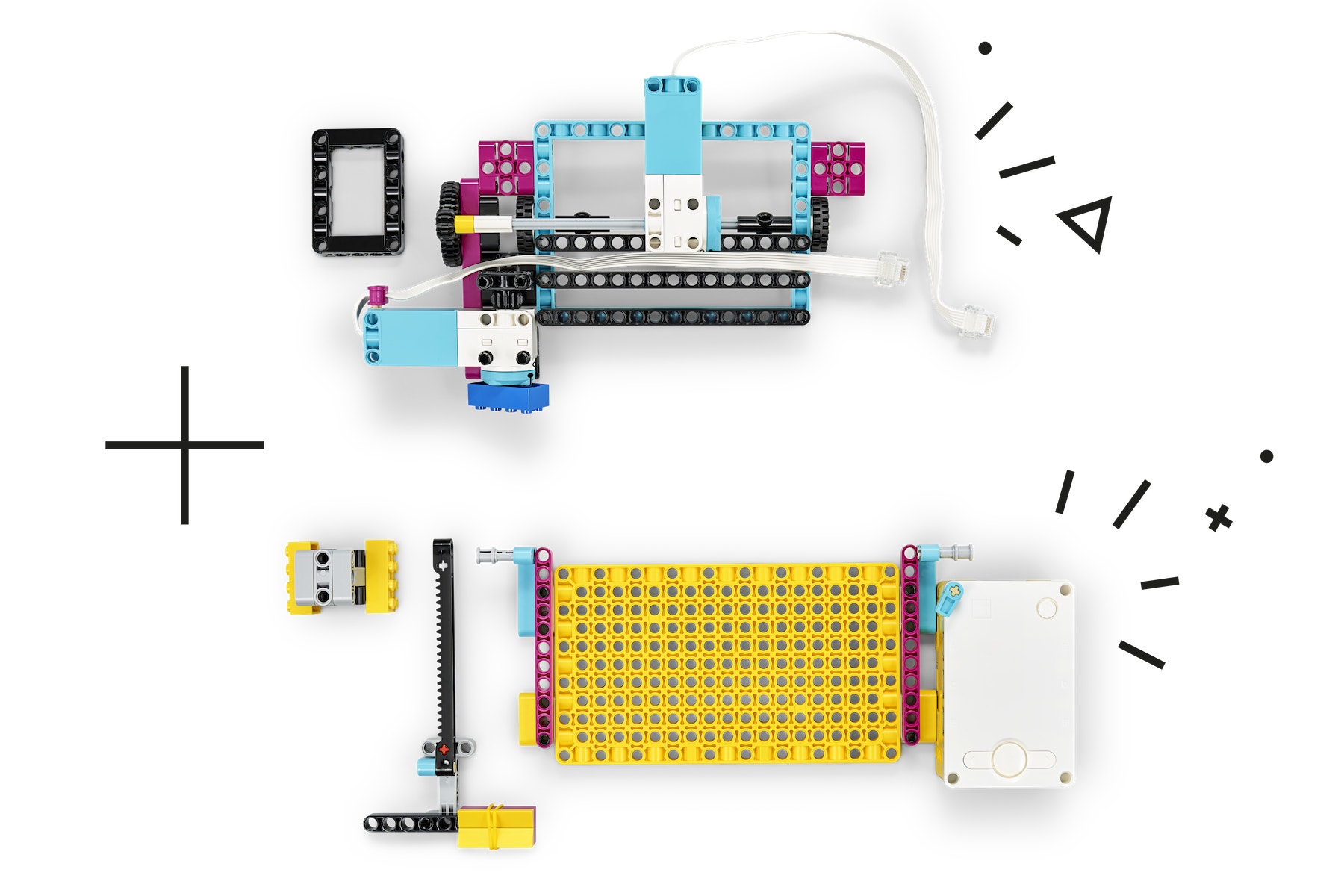
Pre-designed shapes
You can use blank sheets of letter-size paper for this lesson but pre-designed PDFs of CNC cuts are provided. You can find it under Additional Resources in the blue bar to the right of this webpage. By using these pre-designed sheets, it'll be easier for your students to figure out whether or not the CNC works.
This image shows how to load the paper and use the pencil top.
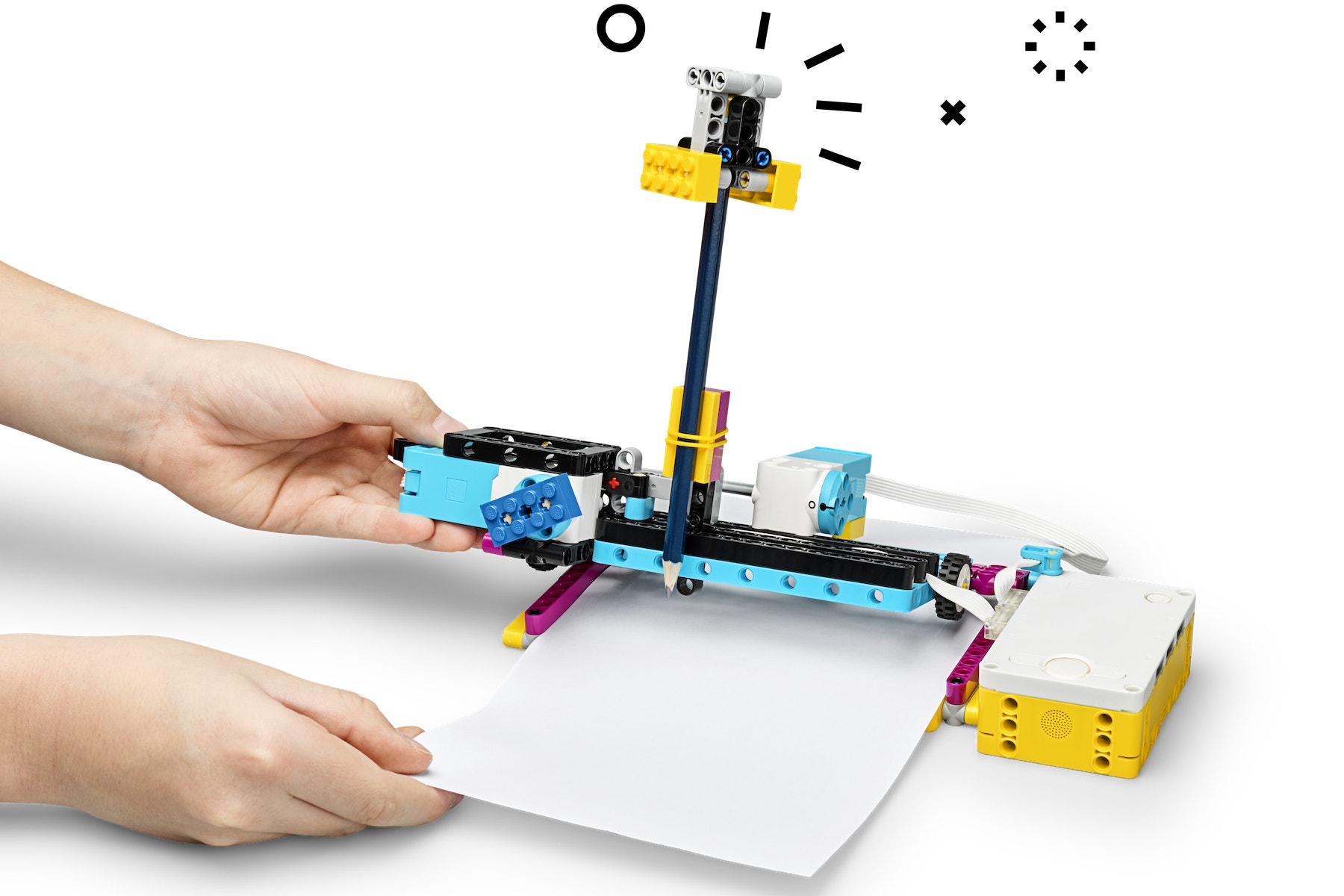
Looking for Issues
The CNC machine model has 4 real issues that must be fixed in order for the program to work as intended:
- A paper feeder wheel is missing, causing the Y axis to not work properly.
- The top of the CNC machine isn't fully attached to the bottom.
- The paper feeder gears are inverted, causing the paper to enter the CNC too quickly.
- The pencil carriage isn't affixed, causing the X axis to work improperly.
Help your students identify the issues. Then have them discuss the following questions with their teammates:
- What doesn’t work intended?
- How should it work?
- How will you fix the issues?
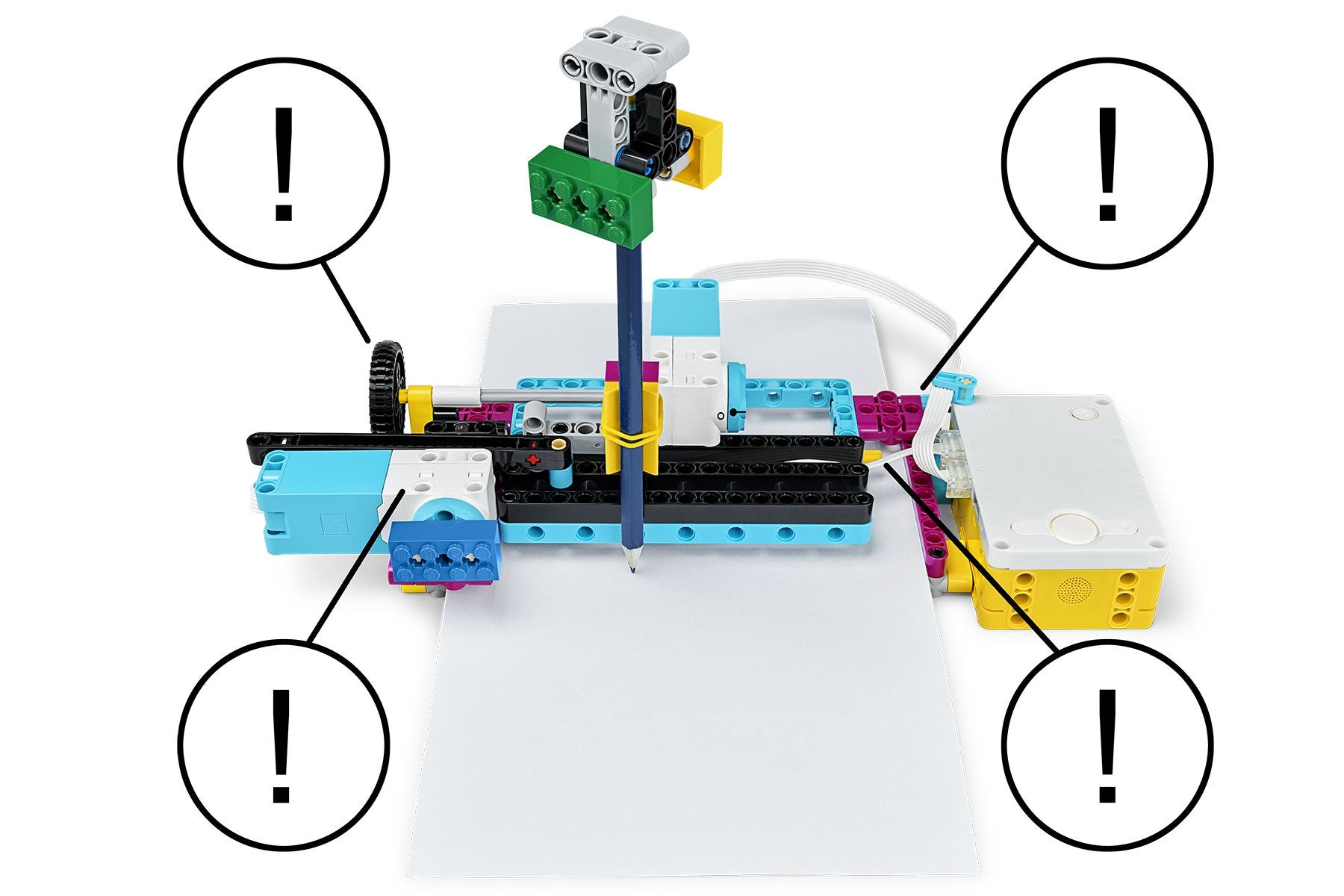
Easy Fixes
Here's the easiest way to fix these issues, though keep in mind that the objective of this lesson is for your students to find their own solutions.
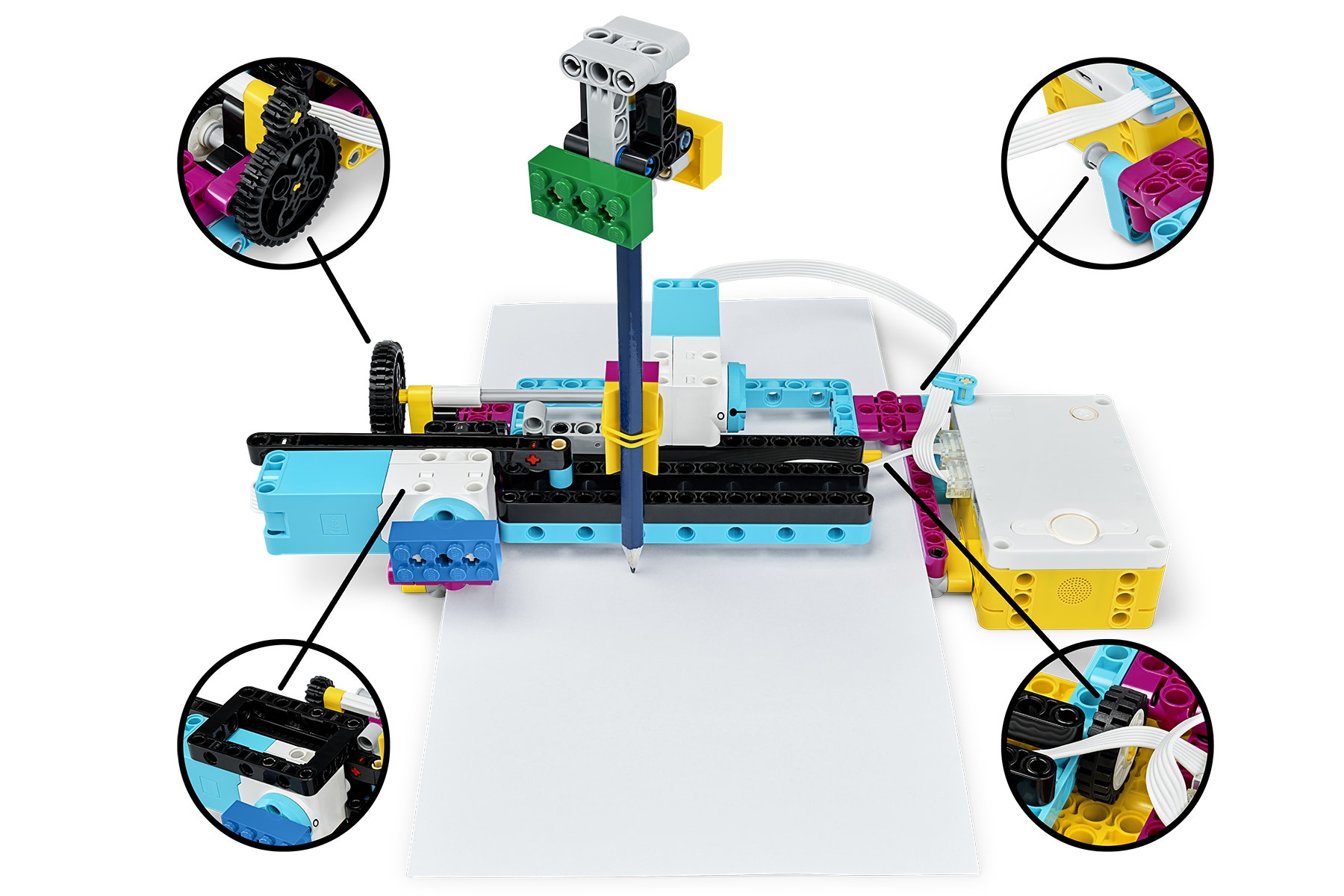
Coding Tips
Have your students write pseudocode or verbally describe what each line of the program does before activating it.
Main Program

Possible Solution
Remember to press the Left Button on the Hub to activate the programming stack.

Remember to press the Right Button on the Hub to activate the programming stack.

Differentiation
Simplify this lesson by:
- Suggesting a selection of bricks your students can use to fix the issues
Take this lesson to the next level by:
- Having your students draw complex shapes on the printer, including curves
- Many machines can work autonomously, which decreases the number of people needed to work in factories. Have your students think about how to upgrade their CNC machines to make them work more efficiently.
You’ll find three possible upgrade solutions under Additional Resources.
Assessment Opportunities
Teacher Observation Checklist
Create a scale that matches your needs, for example:
- Partially accomplished
- Fully accomplished
- Overachieved
Use the following success criteria to evaluate your students' progress:
- Students can describe an object’s structure and function.
- Students can analyze the root causes of gaps between the observed and intended functions.
- Students can solve problems to meet the success criteria for an intended function.
- Students can improve an object’s design by iterating on the model or program.
Self-Assessment
Have each student choose the brick that they feel best represents their performance.
- Blue: I can describe a CNC machine’s structure and function.
- Yellow: I can fix my CNC machine to make it perform its intended function.
- Violet: I can upgrade my CNC machine to make it work more efficiently.
Peer-Assessment
Encourage your students to provide feedback to others by:
- Having one student score the performance of another using the colored brick scale above.
- Asking them to present constructive feedback to each other so that they can improve their group's performance during the next lesson.
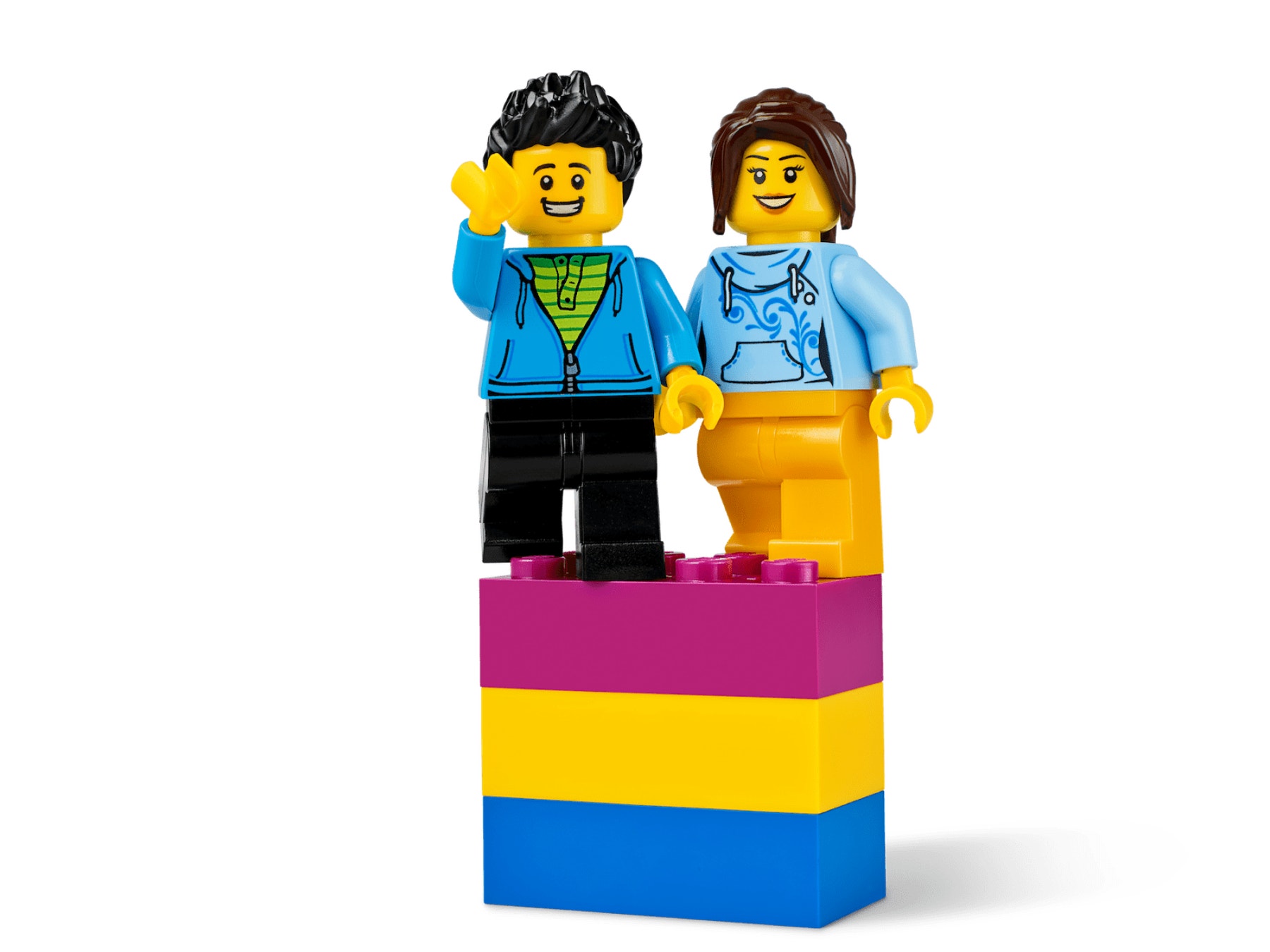
Language Arts Extension
To incorporate language arts skills development:
- Have your students work hands-off to role-play calling a customer support line.
▷ One student describes the problem.
▷ The other student explains how to fix it.
Note: This will make for a longer lesson.
Math Extension
To incorporate math skills development:
Challenge your students to use the maximum available space on a piece of paper to draw a rectangle and see how big it is.
- Change the program parameters to increase the size of the rectangle.
- Have them calculate the size of the rectangle.
- Explain that every design solution has limitations, and that sometimes a solution must be upgraded to meet a need that exceeds its current limitations.
Note: This will make for a longer lesson.
Career Links
Students who enjoyed this lesson might be interested in exploring these careers pathways:
- Business And Finance (Entrepreneurship)
- Education And Training (Teaching)
- Media And Communication Arts (Broadcast Technology)
Teacher Support
Students will:
- Evaluate the performance of a design solution
- Understand the simple function of a machine that’s used in everyday life
- Iterate to identify problems and think of solutions
- Optimize a design solution
NGSS
MS-ETS1-3
Analyze data from tests to determine similarities and differences among several design solutions to identify the best characteristics of each that can be combined into a new solution to better meet the criteria for success.
Common Core
CCSS.ELA-LITERACY.SL.6.2
Interpret information presented in diverse media and formats (e.g., visually, quantitatively, orally) and explain how it contributes to a topic, text, or issue under study.
CCSS.MATH.CONTENT.6.G.A.1
Find the area of right triangles, other triangles, special quadrilaterals, and polygons by composing into rectangles or decomposing into triangles and other shapes; apply these techniques in the context of solving real-world and mathematical problems.




